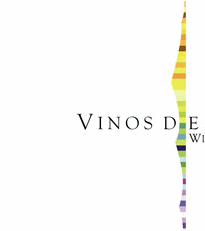Oceania: Oceania Geography Profile
2012/08/15
Oceania Geography Profile
Oceania was originally conceived as the lands of the Pacific Ocean, stretching from the Straits of Malacca to the coast of the Americas. It comprised four regions: Polynesia, Micronesia, Malaysia (now called the Malay Archipelago), and Melanesia. Included are parts of three geological continents, Eurasia, Australia, and Zealandia, as well the non-continental volcanic islands of the Philippines, Wallacea, and the open Pacific. It extends to Sumatra in the west, the Bonin Islands in the northwest, the Hawaiian Islands in the northeast, Rapa Nui and Sala y Gómez Island in the east, and Macquarie Island in the south, but excludes Taiwan and the Ryukyu, Japanese, and Aleutian Islands of the margins of Asia.
The states that occupy Oceania that are not included in geopolitical Oceania are Indonesia, Malaysia (through Malaysian Borneo), Brunei, the Philippines, and East Timor. The islands of the geographic extremes are politically integral parts of Japan (Bonin), the United States (Hawaii), and Chile (Easter Island). A smaller geographic definition also exists, which excludes the land on the Sunda plate, but includes Indonesian New Guinea as part of the Australian continent.
Ecogeographic Oceania
Oceania is one of eight terrestrial ecozones, which constitute the major ecological regions of the planet. The Oceania ecozone includes all of Micronesia, Fiji, and all of Polynesia except New Zealand. New Zealand, New Guinea, Melanesia apart from Fiji, and Australia constitute the separate Australasia ecozone. The Malay Archipelago is part of the Indomalaya ecozone. Related to these concept are Near Oceania, that part of western Island Melanesia which has been inhabited for tens of millennia, and Remote Oceania, which is more recently settled.
- Oceania News
-
- WORLD: Tuition fees row: education expert warns over graduate earnings
- WORLD: UN report attacks austerity budgets for growing inequality
- FRANCE: Aluminium-Lithium Alloys Fight Back
- AUSTRALIA: Pacifica Bauxite Identifies Potential High-Grade Bauxite Outcroppings in Solomon Islands
- AUSTRALIA: Queensland Bauxite Gains State Approval of Mineral Development Work Program
- AFGHANISTAN: UNWTO: International tourism – strongest half-year results since 2010
- Trending Articles
-
- CHINA: China welcomes Guinea to take part in Belt and Road Initiative
- UNITED STATES: Spotify, Hulu target students with discounted bundle
- CAMEROON: Poor End of Year Results for Cameroon Students
- AUSTRALIA: Queensland Bauxite Gains State Approval of Mineral Development Work Program
- CHINA: Chinese-supported infrastructure projects change Zambia's landscape
- UGANDA: Ugandan Govt Starts Verifying International Academy Teachers









